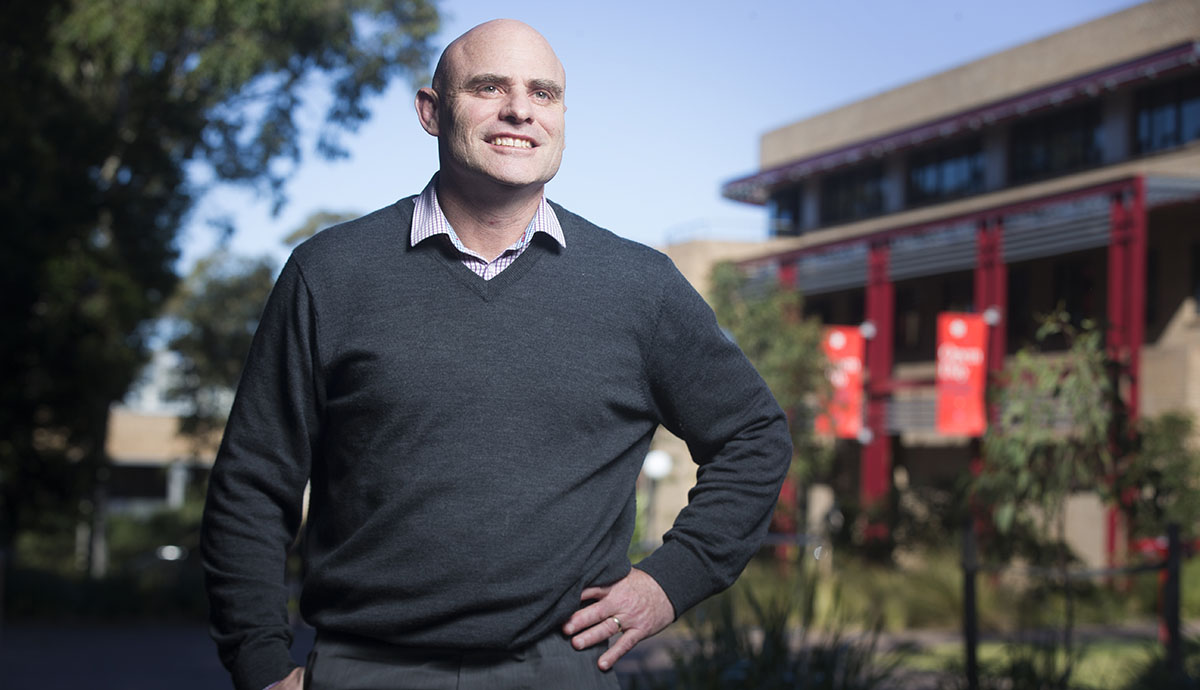November 21, 2017
Sleep and screen time the focus in new physical activity guidelines for young children
Guidelines for parents and carers recognise importance of good quality sleep for healthy development
New National Guidelines on physical activity, sedentary time and sleep for young children were launched this morning (Tuesday, 21 November) by the Federal Minister for Health, the Hon Greg Hunt MP, at Parliament House in Canberra.
University of Wollongong (UOW) early childhood expert Professor Tony Okely led the project to update the guidelines for the Department of Health.
Australian 24-Hour Movement Guidelines for the Early Years (Birth to Five Years): An Integration of Physical Activity, Sedentary Time and Sleep differs from the previous guidelines in covering the entire day, including recommendations on how to help children get good quality sleep.
The Guidelines also provide ideas and examples of how to incorporate adequate movement in an infant, toddler or pre-schooler’s day – and how parents can fit these into their own busy days.
Professor Okely, Director of Research at Early Start, UOW’s early childhood teaching, research and community engagement initiative, said the decision to include sleep recognised its importance in optimising health, development and learning.
“Sleep plays an essential role in a child’s growth and development and shares an interrelated relationship with physical activity,” he said.
“If a child receives good quality sleep, they will have the energy to be active, and an active child is a well-rested child.
“These Guidelines also acknowledge that the whole day matters and individual movement behaviours, such as physical activity, sedentary behaviour and sleep need to be considered in relation to each other when examining their associations with health and developmental outcomes in children.”

Due to the proliferation of hand-held technologies such as iPads and smart phone applications for children aged 0-5 years, another focus of the Guidelines is on limiting the amount of screen time – particularly sedentary screen time – for young children.
The Guidelines recommend no sedentary screen time for children under two, and no more than one hour for those older than two.
“Screen time while sitting can counteract the health benefits of physical activity, leading to language delays, reduced attention, lower levels of school readiness and poorer decision-making,” Professor Okely said.
“The revised Guidelines incorporate the effects of screen time on a child’s growth and development and provide recommendations to parents or carers in how to mitigate these effects through an emphasis on increasing movement, and limiting sedentary behaviour and use of screens.
“A child can do sufficient physical activity to meet the guidelines, yet still be considered sedentary if they spend a large amount of their day sitting, lying down or restrained, especially in front of a screen.
“When a child is sedentary, try to incorporate quality behaviours such as reading, storytelling, playing with playdough and puzzles into their routine to enhance their cognitive development.”
The Guidelines recommend that all screen use at these ages be educational.
“This means co-viewing with a child, discussing content, and using it in ways that help a child make understandings of the world around them, such as to investigate, problem solve, create knowledge.”
Other notable changes from the previous Guidelines include:
- 60 minutes of moderate to vigorous physical activity included as part of the 180 minutes of total physical activity per day recommended for pre-schoolers;
- a recommended 30 minutes of tummy time for infants (spread over the day).
The project team worked with Canadian researchers in developing the new Guidelines, and Canada will be releasing its own 24-hour movement guidelines for the early years at the same time.
